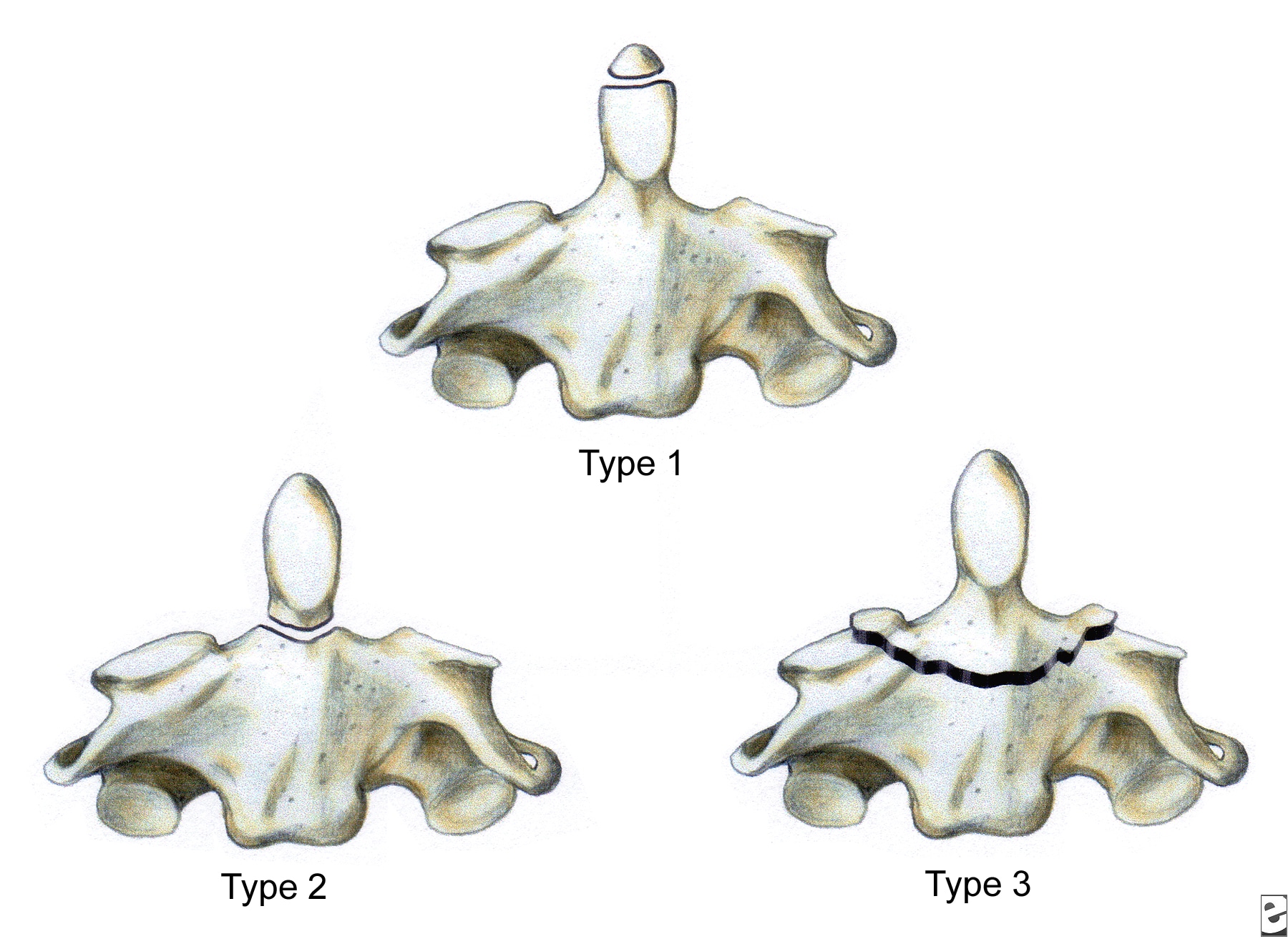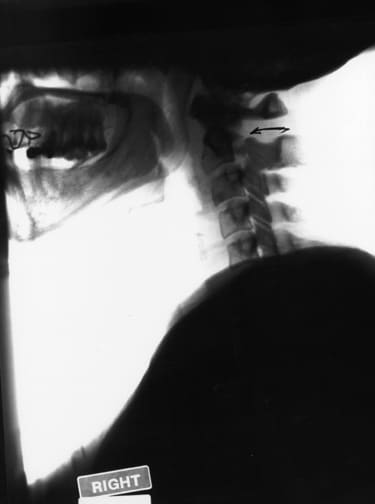There are many different types of cervical fractures. I am only going to focus on C2 fractures. Most commonly, C2 fractures occur from falls and mva's. We all should know the C2 has the odontoid. There are 3 types of odontoid fractures. Type 1 fracture is an oblique fracture through the upper part of the odontoid. This type is rare. Type 2 fracture is more common (60%) that occurs at the base of the odontoid. The last, the type 3 fracture occurs (30%) when the fracture line extends through the body of the axis.
A C2 lateral mass fracture is rare, but it is possible. When this fracture is present it is most certain that another cervical fracture is present as well. This fracture occurs by axial compression with lateral bending. Another type of fracture is the C2 teardrop fracture. These are avulsion fractures with an intact anterior longitudinal ligament displacing and anteriorly rotating the anteroinferior vertebral body fragment. This fracture is more common in the elderly due to their bone densities. A hangman's fracture occurs due to a combination of hyperextension and distraction. This is very common in traumatic and/or fatal mva's.

Type 1, 2, and 3 odontoid fractures.

Hangman’s Fracture more common nowadays known as Traumatic Spondylolosthesis
Daisy
Information and pictures found at http://emedicine.medscape.com/article/1267150-overview

 image found at
image found at